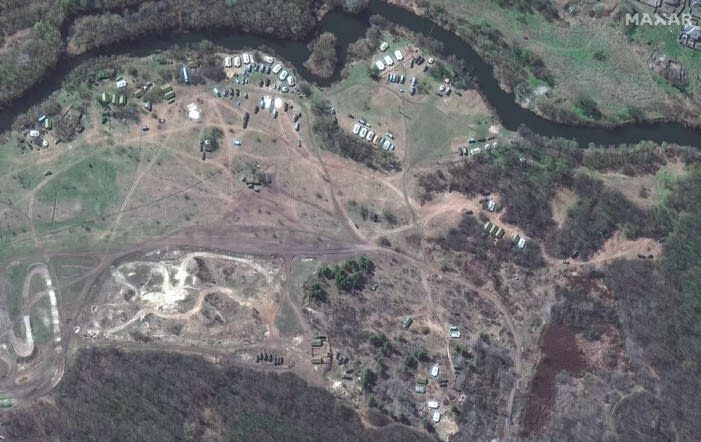
April 11, 2022
The National Geospatial-Intelligence Agency partners with more than 100 companies and is using imagery from at least 200 commercial satellites, David Gauthier, director of commercial and business operations at the National Geospatial-Intelligence Agency, said during the 37th Space Symposium, according to Space News.
One of the companies that has become pivotal is Maxar Technology, which has four satellites in orbit that can provide "sub-meter and, in this case, sub-50 centimeter imagery," Stephen Wood, senior director of the Maxar News Bureau, told the Washington Examiner in an interview on Wednesday.
Their satellites are able to capture images above Ukraine, which are then transmitted to a platform the U.S. government can access within 30 to 45 minutes, he explained, calling it a "significant improvement from where we were ten to fifteen years ago." The satellites, considering they travel in a circular orbit around the Earth, are only able to capture photos of any specific terrain for a short period of time each day.
Stacey Dixon, the principal deputy director of national intelligence, according to Defense One, said at the Space Symposium:
"Early on, we also asked a few commercial companies ... and those of you who helped know who you are, helped us to rapidly make available imagery, like the buildup that was happening around Ukraine's borders, to help shed a light on what Russia was doing. This allowed others to independently interpret the images, piecing them together with other information, and tell the world what was about to happen."Maxar's now focusing their efforts in the Donbas region of Ukraine, he said, explaining that at different points since Russia invaded on Feb. 24, they've had different areas of the country to focus on.
Recent satellite photos show Russian forces moving into eastern Ukraine from Russia's Belgorod region. The convoy contains more than 200 vehicles, including tanks, armored personnel carriers, towed artillery, and support equipment, while the Russian towns of Soloti and Biriuch appear to be the staging grounds for the new troop deployments.
Overhead imagery showed the effects of a bridge that Ukrainian forces said they blew up as Russian vehicles were on their way to Izyum, in eastern Ukraine, on Thursday. Photos shared by the Ukrainian special forces show that explosives had apparently been placed under the bridge in anticipation of a Russian column heading toward it, while they also said that the "entire enemy column" was destroyed.
Wood also acknowledged that Maxar's imagery has been used previously in Syria and during other conflicts, but, he said, "I think it's unprecedented in the veracity of our data that's getting out there," because it's "becoming faster, better, and more widely available."
Maxar's next developments, he said, will likely include clearer images, faster processing time, and more extensive coverage over a specific target area.
They have been providing imagery over Ukrainian territory for months, dating back to late 2021 when Russia was amassing troops along the Ukrainian border ahead of the Feb. 24 invasion. Their imagery at the time showed that more than 150,000 Russian forces were preparing to invade.
Space is a vital theater for the U.S. military, as both Russia and China are looking to "exploit the perceived U.S. reliance on space-based systems," according to a new Defense Intelligence Agency report released earlier this week. DIA Director Lt. Gen. Scott Berrier said:
"The loss of space-based communication and navigation services could have a devastating impact on warfighters during a conflict — that's one of the most serious scenarios anticipated. A secure, stable, and accessible space domain is crucial as China and Russia's space-based capabilities and electronic-warfare activities continue to grow."



Reader Comments